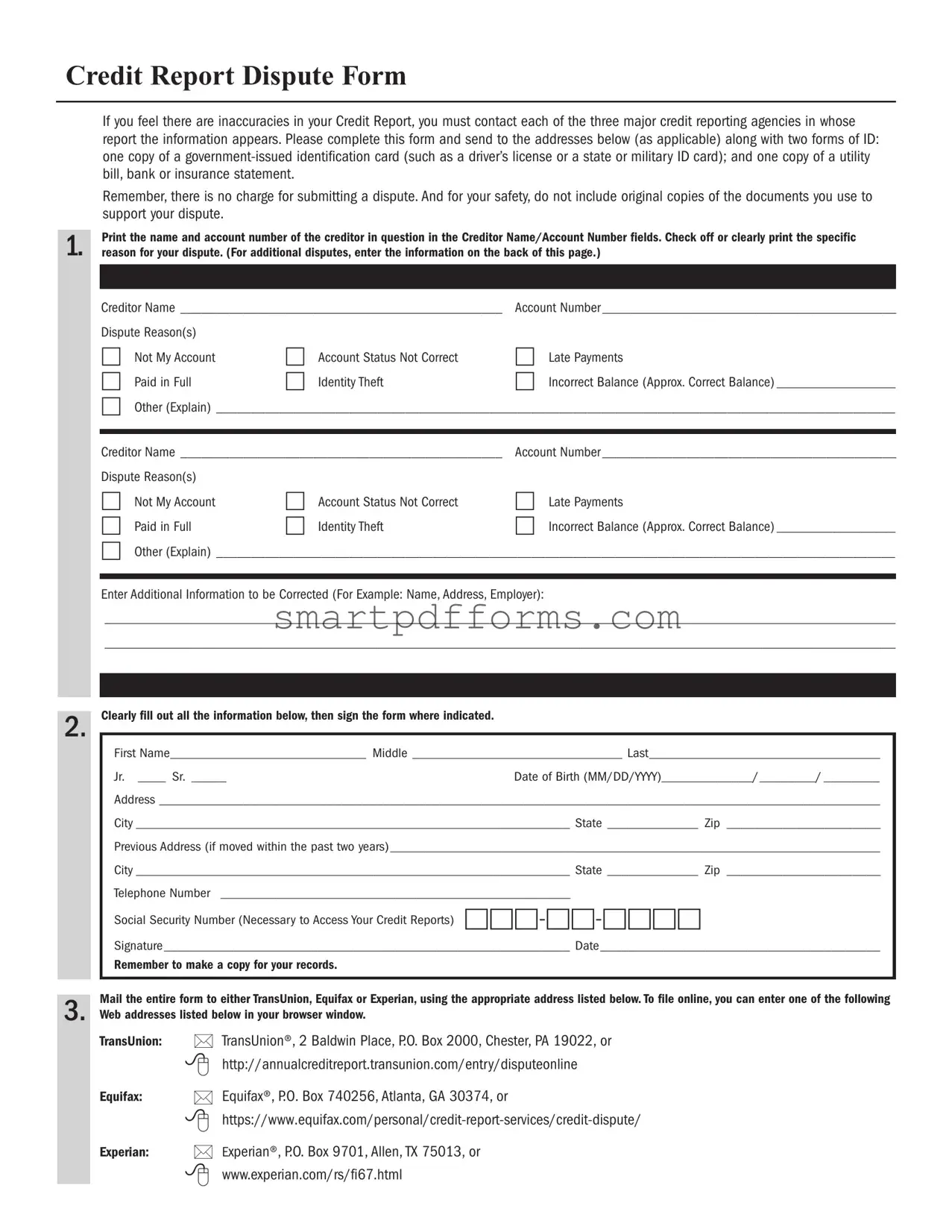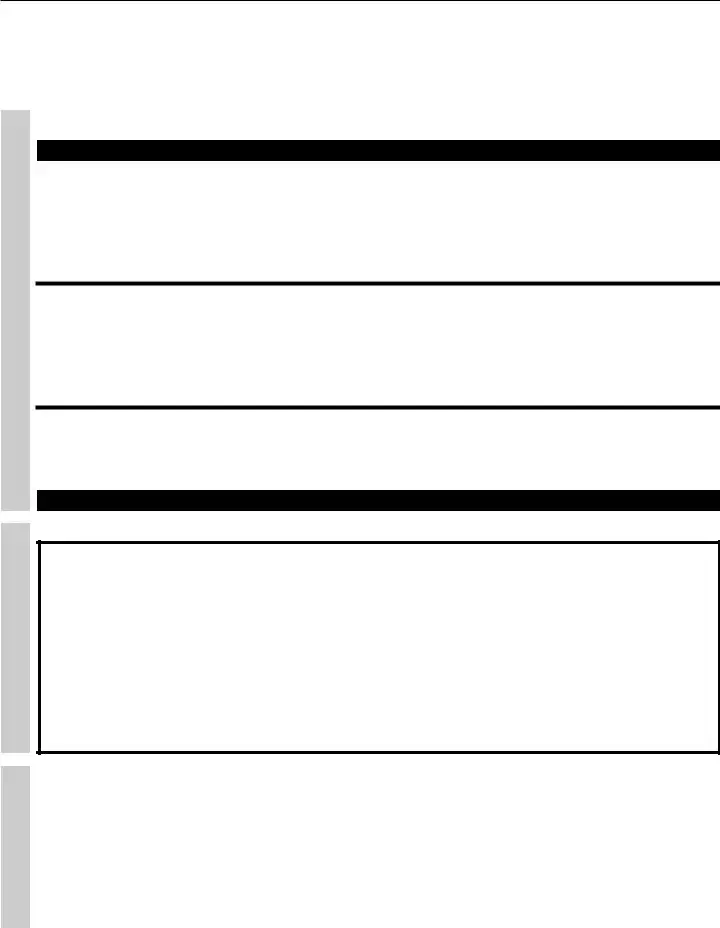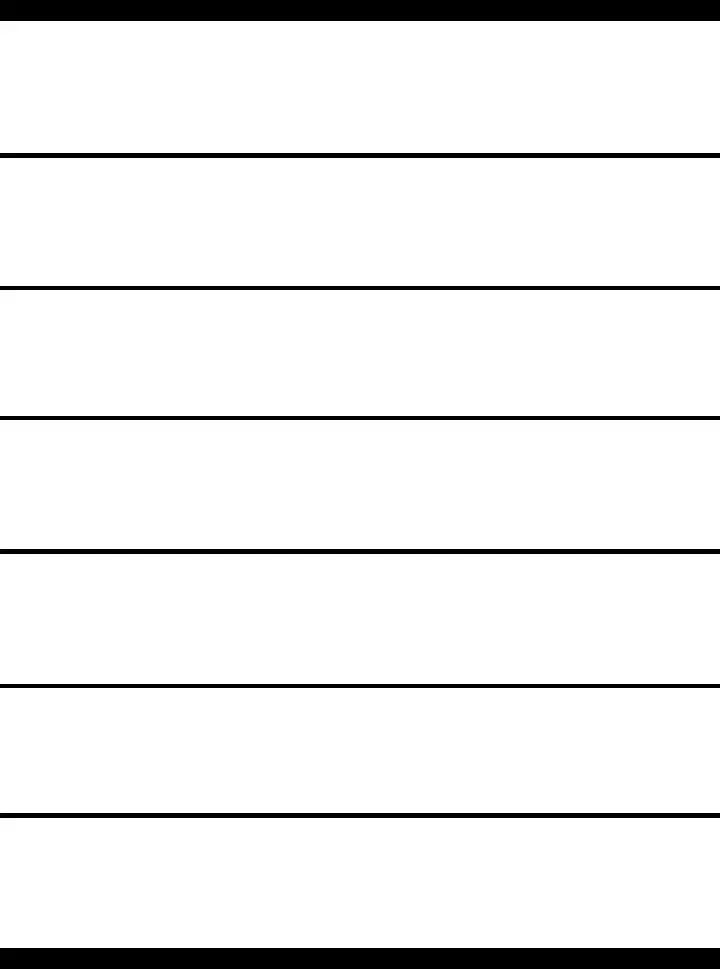Creditor Name ______________________________________________ |
Account Number __________________________________________ |
Dispute Reason(s) |
|
|
□ Not My Account |
□ Account Status Not Correct |
□ Late Payments |
□ Paid in Full |
□ Identity Theft |
□ Incorrect Balance (Approx. Correct Balance) _________________ |
□Other (Explain) _________________________________________________________________________________________________
Creditor Name ______________________________________________ |
Account Number __________________________________________ |
Dispute Reason(s) |
|
|
□ Not My Account |
□ Account Status Not Correct |
□ Late Payments |
□ Paid in Full |
□ Identity Theft |
□ Incorrect Balance (Approx. Correct Balance) _________________ |
□Other (Explain) _________________________________________________________________________________________________
Enter Additional Information to be Corrected (For Example: Name, Address, Employer):
_________________________________________________________________________________________________________________
_________________________________________________________________________________________________________________
Clearly fill out all the information below, then sign the form where indicated.
First Name____________________________ Middle ______________________________ Last_________________________________
Jr. ____ Sr. _____Date of Birth (MM/DD/YYYY)_____________/________/ ________
Address _______________________________________________________________________________________________________
City ______________________________________________________________ State _____________ Zip ______________________
Previous Address (if moved within the past two years) ______________________________________________________________________
City ______________________________________________________________ State _____________ Zip ______________________
Telephone Number __________________________________________________
Social Security Number (Necessary to Access Your Credit Reports) □□□-□□-□□□□
Signature __________________________________________________________ Date________________________________________
Remember to make a copy for your records.


